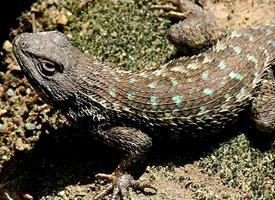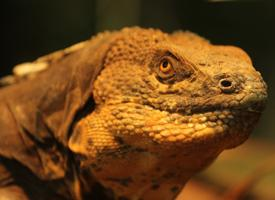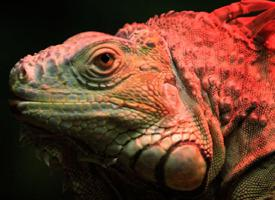
Súlyok és méretek
| Hossz | 8-tól 10-ig cm |
|---|---|
| Farokhossz | 5 cm |
Állatleírás
The Western fence lizard, scientifically known as Sceloporus occidentalis, is a fascinating and adaptable reptile native to the western regions of the United States. This species, belonging to the Phrynosomatidae family, is a robust example of ecological adaptability and has intrigued scientists and reptile enthusiasts alike with its unique characteristics and behaviors.Physical Appearance:
The Western fence lizard is medium-sized, typically ranging from 5.7 to 8.9 cm (2.25 to 3.5 inches) in snout-vent length, with males usually being larger than females. They possess a stout body with a broad, flattened head and strong limbs equipped with sharp claws, ideal for climbing and gripping onto surfaces. Their skin is covered in rough, keeled scales, providing a spiky texture. One of the most notable features of this lizard is its coloration. The dorsal (back) side varies from shades of brown to black, often adorned with wavy or reticulated patterns that help in camouflage. Males have bright blue patches on their throats and bellies, which become more vibrant during the breeding season, serving as a display to attract females and deter rivals. Females and juveniles are generally more subdued in coloration but may also exhibit these blue patches to a lesser extent.
Habitat and Distribution:
Western fence lizards are found across a wide range of habitats including forests, grasslands, chaparral, and even suburban areas, from sea level to mountain elevations. They are highly adaptable and can often be seen basking on fences, rocks, and logs, which is how they earned their common name. Their distribution spans the western United States, from northern Idaho to Baja California in Mexico, showcasing their adaptability to various environmental conditions.
Behavior and Ecology:
These lizards are diurnal, meaning they are active during the day. They are ectothermic, relying on external heat sources to regulate their body temperature. As such, basking in the sun is a crucial part of their daily routine, aiding in digestion and energy acquisition. When threatened, they are known to exhibit a "push-up" display, showing off their bright blue belly to startle predators or assert dominance.
Western fence lizards are opportunistic feeders, preying on a variety of insects and arthropods, including ants, beetles, and spiders. This diet helps control insect populations, integrating them as a vital component of their ecosystem's health.
Reproduction in these lizards occurs in the spring and early summer. Males perform elaborate displays to attract females, which include body bobbing, push-ups, and showing off their brightly colored underbellies. Females lay clutches of eggs in moist soil or under rocks, with the young emerging fully independent, ready to fend for themselves.
A fascinating aspect of the Western fence lizard's biology is its role in the control of Lyme disease. Research has shown that when ticks, carriers of Lyme disease, feed on these lizards, a protein in the lizard's blood kills the Lyme disease bacterium in the tick, thus reducing the chances of it being transmitted to humans and other animals.
Conservation Status:
Currently, the Western fence lizard is classified as Least Concern by the IUCN Red List, indicating that it is not at immediate risk of population decline. However, habitat destruction and fragmentation, along with predation by domestic pets and human encroachment, are potential threats that could impact their populations.
In conclusion, the Western fence lizard is a remarkable reptile with a unique set of adaptations that allow it to thrive in a variety of environments. Its role in the ecosystem, from controlling insect populations to potentially reducing the spread of Lyme disease, underscores the importance of conserving its habitat and ensuring the species continues to flourish.
Hasonló állatok
Új állatfotók
Top 10 állat
- Dolphin gull (Leucophaeus scoresbii)
- Diana monkey (Cercopithecus diana)
- Moustached guenon (Cercopithecus cephus)
- Galápagos tortoise (Geochelone nigra complex)
- Japanese macaque (Macaca fuscata)
- Stone loach (Barbatula barbatula)
- Russian tortoise (Testudo horsfieldii)
- Greek tortoise (Testudo graeca)
- Common flying dragon (Draco volans)
- Vendace (Coregonus albula)


